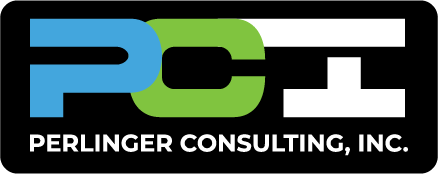Why Are Bills Running You
Accounts payable automation for small business owners who want clean books and fewer clicks. This four-week plan shows how to capture invoices, route approvals, schedule payments, and reconcile without drama in QuickBooks. Built for Littleton, Centennial, the Denver Metro, and beyond.

If you are a small business owner in Littleton, Centennial, or the Denver Metro, accounts payable automation is one of the fastest ways to clean up your books and free up time. This guide shows how to set up accounts payable automation in QuickBooks. Bills arrive cleanly. Approvals stay simple. Payments reconcile the first time. It is written for owners who want accurate accounting, fewer steps, and bank and credit card reconciliations that match.
We provide small business bookkeeping, accurate accounting services, and QuickBooks training across Colorado. This playbook keeps your accounts payable automation clean and practical.
By the end, you will have a four-week plan, guardrails that protect accuracy, and a short list of reports owners actually read.
Why accounts payable automation helps small businesses now
Manual entry slows everything down. It creates errors, delays approvals, and hides cash commitments. Automation fixes the first mile of your payables. Bills land in one place. The data fills in for you. Approvals move without chasing people. Month-end gets calmer because the work is already structured.
What this means for you: fewer clicks, fewer errors, and a close that feels normal. Owners see clearer cash flow and fewer unpleasant surprises. Teams spend less time on rework and more time on work that moves the business forward.
The 30-day AP automation plan
You can set up accounts payable automation in four focused weeks. Keep the steps small. Budget two hours per week. Stick with one intake channel, consistent rules, and a short daily approval habit.
Week 1: Map your flow and clean vendors
Goal: bills arrive the same way every time.
- Pick one inbox for bills. Choose a single intake method so everything lands in one place.
- Name files the same way. Example:
Vendor_Invoice#_InvoiceDate. - Standardize vendors in QuickBooks.
- Enter full legal name, remit email, and payment terms.
- Add W-9 status and note who approves bills for that vendor.
- Record preferred payment method for each vendor.
- Flag higher-risk vendors. If a vendor asks to change bank details more than once a year, add a note to verify by phone using the known number on file.
Owner habit: Check the intake inbox for five minutes a day. Small and consistent beats big and delayed.
Week 2: Turn bills into data and route approvals
Goal: bills become structured data with no re-typing.
- Use automated capture. Route PDFs and images from your intake inbox to your bill capture tool so header data and line items populate for you.
- Create rules for vendor defaults.
- Map each vendor to the correct expense account, class, location, or project.
- Set default terms and due dates so aging stays accurate.
- Add a simple approval path.
- Under 1,000 dollars: one approver.
- 1,000 to 5,000 dollars: two approvers.
- Over 5,000 dollars: owner review before payment.
- Require PO or receipt match when it matters. For inventory or larger jobs, build a three-way match habit. PO, receipt, bill.
- Attach the source document. Require the original invoice as an attachment on every bill so audits and vendor questions are easy.
Who this helps
- Owners who need bookkeeping for small business with fewer steps
- Teams that want accounts payable automation solutions that fit QuickBooks
- Companies that need bank and credit card reconciliations to match every time
Owner habit: Approve bills at the same time each day. Ten quiet minutes beats one long Friday.
Week 3: Schedule payments and protect cash flow
Goal: pay on time without losing control.
- Group payments by due date and discount terms. Pay on the last safe day, and capture early-pay discounts when cash allows.
- Pick one payment method per vendor. Avoid mixing checks, ACH, and cards for the same vendor unless there is a clear reason.
- Set reminders for approvals that stall. If a bill waits more than 48 hours, the system pings the approver.
- Make a weekly AP cash preview. Every Monday, look 14 days ahead at total bills due. Compare to expected cash in.
- Document exceptions. If you pay outside the rule, write a one-line note. Next month you will remember why.
Owner habit: Five-minute AP preview on Mondays and a two-minute approve queue every afternoon.
Week 4: Reconcile, review, and report
Goal: every bill that was paid is reconciled and documented.
- Bank and credit card reconciliations. Check that each payment cleared the right account and is coded right.
- Close the month with three reports owners actually read:
- Accounts Payable Aging Summary to see what you owe and when.
- Expenses by Vendor Summary to spot spend creep by vendor.
- Cash Flow for the last 30 days to confirm reality.
- Hold a 15-minute review. Scan for anomalies. Look for duplicate payments, unusual amounts, vendors that jumped in cost, and bills stuck in approval.
- Set a closing date with a password. Lock the prior month so numbers do not drift.
Owner habit: Put the review on your calendar before month-end so it does not slide.
Guardrails that keep accurate accounting
Automation should make your books cleaner, not messier. These controls keep accuracy high and help stop invoice fraud.
- Bank-change verification: When a vendor asks to change bank details, freeze payments until someone calls the known phone number on file to confirm. Do not rely on email alone.
- Two-person approvals on first payment: The first time you pay a new vendor, require two people to approve the bank details.
- Lock master data: Limit who can edit vendor names, bank accounts, and terms. Small teams benefit from tight edit permissions.
- Exception log: Keep a short list of payment exceptions and how you fixed them. Patterns reveal training needs quickly.
- First-time payer check in AR: If you also automate receivables, add a quick check for the first payment from any new customer.
If you want more on the invoicing side, read Stop Chasing Checks for practical AR automation that pairs well with this AP setup.
QuickBooks settings for accounts payable automation
This checklist aligns with how owners actually run their week and supports accurate accounting services.
- Vendor defaults: Set preferred payment method, terms, and default expense accounts per vendor.
- Bill automation: Use capture tools to read header data and line items, then post to Bills with your approval rules.
- Projects and classes: If you job cost, set the default class or project at the item level so spend rolls up cleanly.
- Attachments required: Make the invoice image a must-have on every bill.
- Closing date: Use a monthly closing date with a password so prior months do not drift.
- User permissions: Give edit rights to as few people as possible for vendor and banking fields.
Want a simple view of the numbers that matter while you build AP automation Use the QuickBooks Online Financial Dashboard for a one-page owner view.
The mini-dashboard that keeps AP healthy
Owners do not need twenty metrics. Track these four and review weekly.
- Invoice cycle time: date received to date approved.
- On-time payment rate: bills paid on or before due date.
- Duplicate rate: duplicates caught before payment.
- Discount capture rate: percent of early-pay discounts earned.
If any metric drifts for two weeks, look for a blocked approval, a vendor sending images instead of PDFs, or a missing rule.
Accounts payable automation for contractors and trades
If you run a service business or work in the trades, AP pain often comes from materials, equipment, and vendor sprawl. These tweaks help contractors, electricians, plumbers, and HVAC teams in the Denver Metro.
- Use item details for materials. You will see true job costs later without digging.
- Class vendors by trade. Materials, equipment rental, and subcontractors separate cleanly for reporting.
- Create a received but not billed habit. Track POs and receipts as you go so bills match what actually showed up.
- Align AP timing with progress billing. Keep cash flow balanced across draws and payables.
- Weekly owner view. Check three numbers that protect you. Open POs, bills due this week, and cash in for the next 14 days.
Troubleshooting common AP automation issues
- Approvals pile up: Approvers are busy. Set daily reminders and make it easy to approve on a phone.
- Duplicate bills sneak in: Use a simple file name rule and always enter the invoice number. Most duplicates vanish.
- Vendors email photos: Ask for PDFs. If that is not realistic, use a capture tool that reads images reliably and watch the error rate.
- Payments do not match reconciliations: Keep one payment method per vendor unless you document why you changed it.
- Aging looks wrong: Check terms on the vendor record, then confirm the invoice date and due date rules.
FAQ
What is accounts payable automation for small business
It is a simple way to capture bills, route approvals, and schedule payments in QuickBooks so your small business bookkeeping stays accurate and fast.
Which tools work with QuickBooks for AP
Most owners start with built-in bill capture and add an accounts payable automation solution if volume grows. We help you choose and set it up.
Will automation hurt accuracy
No. With approvals and reconciliations in place, automation supports accurate accounting and clean month-end closes.
Do you train teams on this
Yes. We offer QuickBooks training for owners and teams plus online bookkeeping services for small business that keep your process on track.
What success feels like in 60 days
- Bills land in one place.
- Most fields fill automatically.
- Approvals happen daily in minutes.
- Payments go out on a schedule.
- Reconciliations are routine.
- Cash flow is clear and calm.
Owners who follow this plan usually see fewer exceptions, faster closes, and clearer cash flow across Littleton, Centennial, and the broader Denver Metro.
Local and practical
Perlinger Consulting supports small business bookkeeping and accurate accounting services across Littleton, Centennial, the Denver Metro, and beyond. Need hands-on help right away We offer Colorado QuickBooks consulting services online or on site. We help you design accounts payable automation that fits your business, then we keep you on track with a monthly close and simple owner dashboards.
Call 720-290-4389 or visit perlingerconsulting.com to set up accounts payable automation and small business bookkeeping that keeps your QuickBooks clean.
Helpful resources
- FBI IC3 Annual Reports: current fraud trends that support the vendor bank-change controls in this guide.
- Related Perlinger posts:
- Stop Chasing Checks: invoicing automation that shortens time to cash.
- QuickBooks Online Financial Dashboard: a one-page owner view that surfaces AP metrics.
Disclosure
This article is for educational purposes only. It is not financial, legal, or tax advice. Always review your specific situation with a qualified professional.
